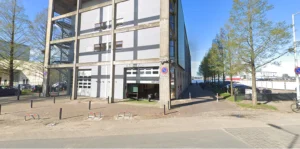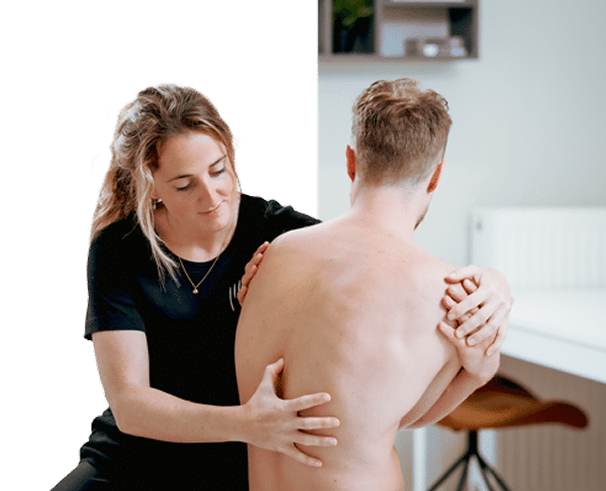Causes of calf pain
Pain in the calf often occurs after improper movement, overuse or insufficient warm-up. Poor circulation or an injury can also play a role. Sometimes the pain is acute, as with a muscle tear. Other times it builds up gradually, such as from prolonged standing or walking.
Common causes of calf pain are:
-
Sprain or tear of the calf muscle.
-
Wrong (sports) load.
-
Muscle fatigue or cramping.
-
Poor circulation or vascular problems.
-
Shortened or stiff muscles.
-
Irritation of the Achilles tendon or surrounding structures.
Common injuries and conditions in the calf
Calf muscle tear (whiplash)
A sudden, sharp pain in the calf during exercise often indicates a muscle tear, also called whiplash. You feel as if something “snaps” in your calf and walking immediately becomes difficult.
Calf strain
In a strain, the muscle fibers are stretched but not torn. You feel a nagging pain, especially when walking or climbing stairs. This often occurs after intense exercise without proper warm-up.
Muscle cramp in the calf
Cramping is a sudden, painful contraction of the muscle. It often happens at night or during exercise. The cause is usually fatigue or a disturbed fluid or mineral balance.
Chronic calf pain due to overuse
Prolonged loading without adequate recovery can cause continuous pain in the calf. Consider runners or people who stand or walk a lot while working.
Etalage legs (intermittent claudication)
This vascular disorder causes pain in the calves during walking, which subsides when resting. It is caused by reduced blood supply to the leg muscles.
Recognizable symptoms of calf problems
Calf pain can manifest itself in a variety of ways. Do you recognize one or more of the signs below? Then it is wise to get yourself properly examined.
-
Pain when walking, climbing stairs or standing up.
-
Searing or stabbing pain in the muscle area.
-
Stiffness in the morning or after rest.
-
Cramping or contractions during exertion or at rest.
-
Decreased strength or difficulty pushing off.
-
Swelling or a tight tight feeling in the calf.
-
Feeling “locked in” or restricted movement.
The sooner you take action, the better the recovery. That way you prevent calf pain from becoming chronic or worsening.
When does physical therapy help with calf pain?
Do you regularly suffer from your calves or does the pain keep coming back? Then physical therapy is a smart step. We help you strengthen the muscle structure, improve circulation and find the right balance between strain and recovery.
Guidance is also important after a muscle tear, surgery or long-term overuse for optimal recovery.
This is how The Physio Man helps you recover
We focus not only on the pain, but on the overall picture. We pay full attention to your posture, load, muscle function and ability to recover.
Mobilize, empower and guide
Depending on your symptoms, we deploy targeted techniques, such as:
-
Mobilize the ankle and knee for a better chain of motion.
-
Exercises focused on strength, coordination and endurance.
-
Trigger point treatment or massage of the calf muscles.
-
Taping or compression for swelling or instability.
-
Advice on load capacity, posture and recovery time.
Long-term recovery
We build up your load slowly and focus on sustainable recovery. This way, you prevent recurring pain symptoms and can move again without worry.
This is how we approach it at The Physio Man
1. Intake and examination
We start with a thorough intake and physical examination. This way we clearly identify the cause of your calf pain.
2. Customized treatment
You will receive a personalized treatment plan that fits your body, goals and daily activities.
3. Working together
Step by step, we work on recovery. We guide you through each stage, so that you can continue complaint-free and confident.
Share this article:


